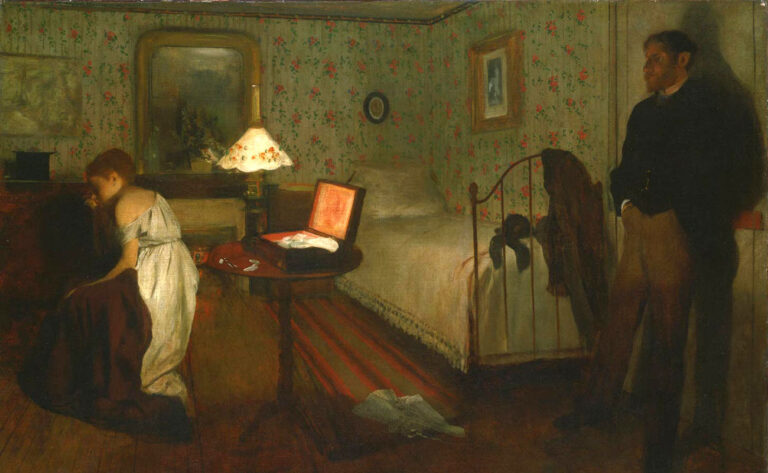Our first video game commentary begins with Forspoken, a 2023 open-world action role-playing game. For those not regularly interacting with video games, I assume that these terms mean little to you, so let’s take a moment to define them from my vantage. (Please note that I will hereafter refer to video games simply as “games,” unless specified for clarity.)
Let’s start back to front. First, role-playing. This likely brings to mind Dungeons and Dragons from 1974, a tabletop game that is, indeed, still wildly popular (and even used clinically in the psychotherapy space). While the games are similar, the term refers to something slightly different in video games. In both, you assume the role of a character and enact the narrative of that character; yet, in video games, you are most often playing a pre-set character with a relatively established narrative path using scripts provided for you instead of creating the scripts yourself. In Forspoken, you play as Alfre “Frey” Holland, a young adult woman who grew up in New York City. Her role, as we will discuss, involves being transported to an alternate medieval-esque world of magic and monsters, Athia, and discovering her connection to said world and its people. The role-playing element occurs as you vicariously live through Frey’s experiences in Athia.
Next, and probably most self-evident yet confusing, is the term “action.” You may be thinking, “Aren’t all video games action?” After all, are you not taking actions in Pac-man as you consume fruits and ghosts, or in Space Invaders when you move the cannon on the bottom of the screen and shoot the aliens? You’re absolutely right, but there are plenty of games that involve slow, careful deliberation. I won’t get into this too much, but I find the easiest way of thinking about this is the difference between soccer and chess. Forspoken is much more in the camp of soccer; you make in-the-moment decisions as you play as Frey. In this case, these actions are restricted to moving around the screen and fighting the aforementioned monsters. Paradoxically, other than progressing the game, these actions have no direct bearing on the narrative of Forspoken, merely on the elements surrounding the narrative. For example, a quest (i.e., a portion of the overall plot) could ask you to save the father of one of Frey’s new friends in the new world of Athia. You must then travel to the specified destination, locate her father, and fight monsters on the way using magic. While the contents of the quest (i.e., saving the father) are core elements of the overall plot, how you carry it out (e.g., what path you take, what monsters you fight) usually does not matter more than being a conduit for the action elements of the game. Essentially, action games are a test of hand-eye coordination, dexterity, and processing speed.
Finally, the term “open-world.” Games under this moniker allow players to take their character wherever they want in the game world. Traditionally, games followed a relatively constrained pattern––you could go only where the narrative was actively occurring. The open-world concept expanded this to allow players to explore areas other than those pertinent to the primary narrative. In the truest form, this allows players to access the entirety of the game’s area from the start. Most games, however, follow a variation of the traditional linear approach wherein new areas are locked by the progression of the main story but previous areas are accessible after they have first been explored. Forspoken follows this latter pattern. As you––Frey––complete the main story quests, you unlock new areas of the map. Subsequently, you unlock more powers that you can then use to more deeply explore the areas you’ve already been by accessing areas you could not get to without the new powers (e.g., the ability to cast water magic and glide on the surface of water). This game highlights a core element of video games, particularly in relation to other genres: the narrative is only one piece of the puzzle; some people mainly play for the story, others primarily enjoy the exploration and action, and the majority come for a combination of them all.
Forspoken combines these three elements––role playing, action, and open world––to immerse the player in a fast-paced journey through Athia and Frey’s place within it. After being transported to Athia from New York City, Frey gains the ability to use nature magic and discovers the last bastion of human civilization in Athia. Her original goal is to find a way back to New York, leading her to help locate key individuals who may help her do so. As she learns more about the land’s history and politics––particularly the landscape as influenced by a magical and biological blight she calls the Break––Frey becomes the target of the former, all-powerful leaders of the world, the Tantas. These four women were once the saviors of the land, protecting its people from all threats. Yet you learn that they seemingly lost their minds around the time the Break started to devour the people and landscape; the Tantas turned against their people, their benevolence morphing into tyranny. They remain in their respective domains while the Break consumes more and more of the landscape, invading the people’s last city at the center of the landmass. Frey appears to be the only one unaffected by the Break. As such, she assumes the begrudging role of exploring beyond the limits of the city to confront the “evil” Tantas. Without getting too caught up in the finer details of the story, you learn the cause of the Tantas’ madness as you defeat them one by one. Eventually, Frey must also confront the instigator of their insanity while questioning her own place in her original life and the new life thrust upon her.
As a psychiatrist and fantasy lover, I highly enjoyed this game, not only for its technical elements but also for its poignant examples of chronic and complex trauma. I’ll discuss three examples of trauma experienced by the following characters in the game: Frey, Athia’s populace, and the Tantas.
First, our main character. Frey’s life experience falls under the “prototypical” model of chronic, complex trauma. She is a woman of color who grew up in the New York City foster care system after being found by the Holland Tunnel as an infant. The story starts in a courthouse where Frey is undergoing a hearing for petty theft, apparently a repeat offense. We learn that she has been doing small-time criminal jobs to get by after aging out of the foster system. Just when she has amassed enough money to leave the city, the derelict apartment she’s squatting in gets set on fire by former criminal associates with a grudge. She escapes, but the fire engulfs her cash savings. With nowhere left to go, she wanders to the Holland Tunnel to sit with her sorrow. As her hopelessness seems to peak, she sees a golden armband in an abandoned shop window, and upon touching the armband, she is whisked to Athia against her will.
Frey has not had stability her entire life. Passed from family to family, she did not have a caregiver she could trust. She learned to take care of herself without relying on others, shunning––and, at times, backstabbing––all those who tried to get close to her. The feeling of abandonment from her family of origin colored all her interactions. She even believes that her world of origin abandoned her, stripping her of her future plans and allowing her to be shipped to a new world without any apparent means of returning. The people Frey meets in Athia initially serve only as a means of getting back to her world of origin. While she could be their protector, she vehemently resists this, at first covertly to delude those around her and then overtly as they expected more from her. Had Frey not been individually targeted by the Tantas, she would not have engaged in the plight of Athia’s people. She appeared selfish in her self-preservation, preventing these strangers from having the opportunity to hurt her. The narrative of the game is, in part, a restorative arc in which Frey learns to form stable, secure attachments, albeit through significant suffering. For example, Frey comes to trust the Athian governors, who initially jailed her and sought to kill her, after they gradually revealed their own trust in Frey’s ability to combat the Break. In a sense, Frey’s healing is the core of her hero’s journey. She saves the world, but only by confronting the recurrent scars left by the chronic trauma of her upbringing.
The surviving people of Athia experience a different form of trauma, more classically related to post-traumatic stress disorder (PTSD). In less than one generation, their entire world fell apart and their leaders turned against them. They had to fend for themselves to survive. They banded together as refugees against the onslaught of the Break––nearly the entire population lost their homes, families, and livelihoods. The Break spread from the coasts inward, pushing the surviving population to their last, central city. As the Break slowly encroached on society’s last home, they faced the potential for death with every passing day. Their fight-or-flight system could never shut off. The chronic, inescapable trauma wore on their minds, manifesting as complex PTSD for most––if not all––of the population. It re-shaped their worldview, affecting their relationships with themselves, with each other, and with their world. Despite Frey’s deus-ex-machina-esque appearance and resolution of the world’s conflict, the people must confront the terrors from their pasts to restore Athia. In this way, the populace of Forspoken embody chronic societal trauma.
Finally, the Tantas. Over the course of the game, you learn that these rulers had made a major sacrifice––they had to contain the power of an evil entity, a demon summoned by an enemy nation to destroy Athia. The Tantas defeated the demon and contained it, but the process of doing this split their attention, and, more importantly, the incessant voice of the entity in their heads poisoned their minds. The entity’s whispers forced the Tantas’ magic to run wild and uncontrolled, ultimately causing the Break. The Tantas’ trauma is thus twofold: the constant attacks on their consciousness by the entity, and the constant moral injury engendered by their actions. They sought to protect their people from the imminent threat of the entity but, in so doing, caused irreparable harm as this burden drove them to break from reality. Through these repeated traumas, the Tantas developed psychosis. This did not occur immediately. Rather, it took years of psychological trauma to culminate in their psychotic breaks, which was the ultimate goal of the entity. Just like the previous two examples, the Tantas could not escape. Only through their defeat by Frey could they find redemption and release.
As I hope these examples have demonstrated, trauma permeates Forspoken. This is not an uncommon motif in role-playing games; however, most games focus on singular traumatic events, more in the realm of classic PTSD. Forspoken shifts focus to the chronicity of trauma, highlighting the multi-faceted ways that trauma can occur. To the player, the trauma is understandable––if delivered in a stilted narrative at times––and allows for exploration of this concept in the safety of a magical world. Unlike the characters in the game, the player is empowered with the means of fighting against it, thus highlighting a critical element of trauma that leads to morbidity: the feeling of powerlessness.
To the astute player, Forspoken is as much a psychological case study as it is an enjoyable way to pass the time. You zoom around the map with fantastical power and control, all the while healing a trauma-scarred world and people. Forspoken comments on the richness of the human experience and is, without a doubt, a prime example of video games’ place as a health humanity.












